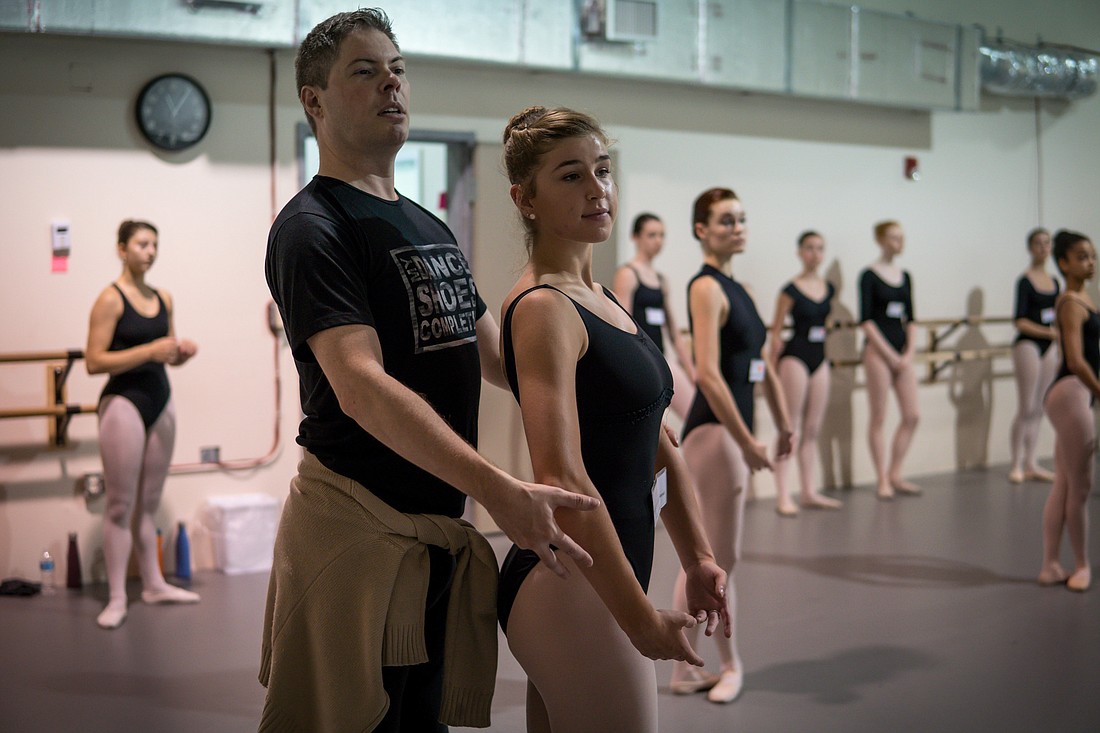- June 1, 2025
-
-
Loading

Loading

Imagine being a young ballet fan glued to your seat, watching professional dancers who you aspire to be in the shoes of someday. Now imagine being accepted into a program a few years later that’s led by the same dancers’ instructors, with a culminating performance on the same professional stage your idols perform on.
Now in its second year in its current format, the Sarasota Ballet International Intensive offers dancers ages 10-20 that exact experience. Those accepted through an audition are given the opportunity to train with both company faculty and guest faculty members. This year, the 70 students were treated to classes led by Phillip Broomhead, the former principal dancer with The Royal Ballet famous for dancing the role of the Southern Cape Zebra in David Bintley’s original “Still Life at the Penguin Cafe” (which Sarasota Ballet performed in its March show).
Broomhead says teaching at a Sarasota Ballet program is like coming home because the company teaches in the style of The Royal Ballet School where he was trained. He gets so comfortable, he says, he often forgets he’s working with adolescents rather than young adults.
“It’s such a pleasure to have students who are so hungry to learn and to hone their craft,” Broomhead says. “I have to make sure to remember they’re not professionals, because they’ll keep dancing for 12 hours if you ask them to … I think they’re all 18 or 19 by the way they work, that’s how mature they are.”
Two of these intensive students are TJ Thomson of Atlanta and Cynthia Ryan of Long Island, New York, both of whom are returning to Sarasota in the fall as trainees at The Margaret Barbieri Conservatory. The conservatory is Sarasota Ballet’s pre-professional program, so unlike the five-week summer intensive, the girls will train as full-time students year-round.
Ryan says she was first exposed to Sarasota Ballet when she was a young dancer and her mother brought her to see the company perform at The Joyce Theater in New York City. She was mesmerized by the beautiful, dynamic movements of the company members and the diversity of its repertoire, much of which she hadn’t seen performed by other ballet companies.
Thomson says she too was attracted to Sarasota Ballet because of its repertoire, some of which students get to perform at their culminating performance. Director of Education Christopher Hird says the International Intensive Showcase July 27 and 28 will offer a diverse selection of pieces, including classical ballet, a couple Broadway numbers, West African dance and contemporary.
“It’s a potpourri of dance,” he says. “You’ll find something you like.”
In order to prepare for this performance and get the most out of their experience, the students must remain focused and dedicated, Thomson and Ryan agree.
“Dancing here for so many hours a day, your mind and body become stronger and a better dancer overall,” Ryan says. “I feel like my upper body has really improved.”
Broomhead says the real impact is teaching the students skills they can bring back to their home studios. The students say many of these lessons are rooted in a better understanding of how their bodies work and move — particularly what muscles and other body parts need to be engaged in order to master certain technical skills.
Thomson says the intensive instructors excel at making personal corrections and explaining different techniques in ways that make sense to specific individuals.
The biggest challenge, Ryan and Thomson agree, is learning a multitude of dances for the showcase, which challenges them to perfect choreography that is completely new to most of them.
“But it’s also rewarding because it trains you to see what it's like to be in a company where you have to pick up choreography very quickly,” Ryan says.
Hird says he went to Brazil for a week in the middle of the intensive, and when he came back, he was amazed at the significant progress the students had made. He’s grateful to teach students who are hard-working and open to new ways of instruction, especially in an environment where they’re pushed to learn the equivalent of three months of regular ballet schooling.
But to fully understand all that they’re learning, he says you have to experience it for yourself.
“There’s very little dance in the summer here so this is the chance for people who love dance to see the next generation of dancers and the future of the company,” Hird says.